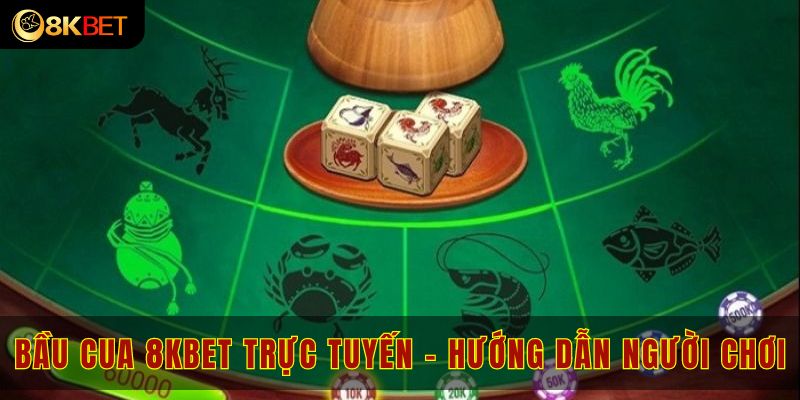Đối tác uy tín của nhà cái 8k bet
8KBET | TRANG CHỦ 8KBET.COM – THIÊN ĐƯỜNG CÁ CƯỢC ĐỈNH CAO VIỆT NAM
8KBET – marugujarat.in.net là một nền tảng lý tưởng cho những người yêu thích cá cược trực tuyến, với hơn 2 triệu người tham gia mỗi tháng tại Việt Nam. Trang web sở hữu giao diện thân thiện, dễ sử dụng, mang lại trải nghiệm mượt mà cùng nhiều trò chơi hấp dẫn như cá cược casino trực tuyến, thể thao, xổ số, game bài, nổ hũ, bắn cá, đá gà… cùng tỷ lệ cược vô cùng cạnh tranh.
 Thương hiệu nhà cái Thương hiệu nhà cái |
 8kbet hoặc 8k bet 8kbet hoặc 8k bet |
 Xếp hạng nhà cái tại VN Xếp hạng nhà cái tại VN |
 Top 1 nhà cái uy tín Top 1 nhà cái uy tín |
 Trụ Sở Chính Trụ Sở Chính |
 Philippines Philippines |
 Phát hành bởi Phát hành bởi |
 Pagcor và Curacao Pagcor và Curacao |
 Danh mục game cá cược Danh mục game cá cược |
 Casino online, thể thao, xổ số, game bài, bắn cá, slot nổ hũ, đá gà,… Casino online, thể thao, xổ số, game bài, bắn cá, slot nổ hũ, đá gà,… |
 Chăm sóc khách hàng Chăm sóc khách hàng |
 Hỗ trợ 24/7 Hỗ trợ 24/7 |
Giới thiệu tổng quan về nhà cái 8Kbet
8Kbet được thành lập vào ngày 8 tháng 8 năm 2020 và chịu sự quản lý trực tiếp của cơ quan giải trí và trò chơi Philippines (PAGCOR). Trụ sở chính của nhà cái được đặt tại thủ đô Manila, Philippines, nơi tập trung hoạt động của nhiều công ty cá cược hàng đầu châu Á.
Bên cạnh đó, nhà cái đã được cấp giấy phép hoạt động hợp pháp vào ngày 12/10/2020 bởi Pagcor sau khi đáp ứng đầy đủ các tiêu chí nghiêm ngặt như bảo mật, thanh toán và tính minh bạch trong trò chơi.

Đánh giá game 8kbet com từ anh em cược thủ 3 miền Việt Nam
Khi nhắc đến các nhà cái uy tín, 8kbet.com luôn được các anh em cược thủ đánh giá cao nhờ vào sự đa dạng dịch vụ và trải nghiệm người dùng xuất sắc. Dưới đây là một số đánh giá nổi bật mà anh em đưa ra:
Dịch vụ & sản phẩm đa dạng
8kbet game cung cấp một loạt dịch vụ cá cược trực tuyến hấp dẫn. Các sản phẩm của nhà cái đều được hợp tác với những nhà cung cấp game hàng đầu đảm bảo chất lượng trò chơi cao cấp và đa dạng. Sau đây là các hạng mục game được yêu thích nhất hiện nay:
- Casino online
- Cá cược thể thao
- Xổ số trực tuyến
- Bắn cá đại dương
- Đá gà trực tiếp
- Game bài đẳng cấp
- Xóc đĩa đổi thưởng
- Tài xỉu ăn tiền
- Baccarat online
- Vòng quay Roulette
- Live dealer casino
- Nổ hũ thần tài
- Tỷ lệ kèo
- Bầu cua tôm cá
- …
Giao diện trò chơi đơn giản dễ dùng
Giao diện đăng nhập của 8kbet app được thiết kế theo phong cách hiện đại, dễ thao tác, sử dụng gam màu vàng đen nổi bật. Các trò chơi được tối ưu hóa để hoạt động mượt mà trên cả máy tính và thiết bị di động, với đồ họa sắc nét và bố cục UX/UI rõ ràng, mang lại trải nghiệm thuận tiện cho người dùng.
Tốc độ nạp rút nhanh chóng
Do nhà cái liên kết với các ngân hàng như Vietcombank, Viettinbank, Mb bank, Agribank… nên tốc độ nạp rút tại 8kbet luôn đứng đầu thị trường, mọi giao dịch nạp tiền rút tiền chỉ mất dưới 2 phút, 24/24 bất kể ngày nghỉ, lễ tết. Nhà cái mới ra mắt thêm phương thức nạp rút độc quyền qua usdt giúp anh em không cần xác minh sinh trắc học.
Độ bảo mật thông tin tuyệt đối
8kbet đặc biệt quan tâm đến việc bảo vệ thông tin cá nhân và các giao dịch của người chơi. Nhà cái áp dụng công nghệ mã hóa SSL 128bit tiên tiến, Geotrust và hệ thống Firewall hiện đại, đảm bảo rằng mọi dữ liệu được trao đổi giữa người chơi và hệ thống luôn được bảo vệ một cách an toàn tuyệt đối.
Khuyến mãi hấp dẫn ngập tràn
8kbet lôi cuốn người chơi thông qua các chương trình ưu đãi hấp dẫn, bao gồm thưởng 199k cho lần nạp tiền đầu tiên, hoàn trả không giới hạn lên đến 4% tiền cược, cùng các sự kiện đặc biệt dành riêng cho thành viên mới.
Tính minh bạch trong đặt cược
8kbet live áp dụng các thuật toán ngẫu nhiên hiện đại, đảm bảo mang lại môi trường cá cược minh bạch và công bằng cho người chơi. Đồng thời, nhà cái triển khai hệ thống giám sát và phát hiện gian lận nhằm duy trì tính minh bạch trong quá trình cá cược.
Phiên bản tải 8kbet app tiện lợi
8kbet cung cấp ứng dụng di động tương thích cho cả hai hệ điều hành iOS và Android. Giao diện ứng dụng được thiết kế tối ưu, đảm bảo trải nghiệm mượt mà trên các thiết bị màn hình nhỏ, đồng thời tích hợp đầy đủ các tính năng như phiên bản web, bao gồm nạp tiền, rút tiền và đặt cược.
Hỗ trợ khách hàng chuyên nghiệp
Dịch vụ chăm sóc khách hàng hoạt động không ngừng nghỉ 24/7, luôn sẵn sàng hỗ trợ và giải đáp mọi thắc mắc của người chơi qua các kênh liên lạc như hotline, Zalo, Telegram, email… Đảm bảo phản hồi khách hàng trong vòng 2 phút.

Thống kê một số link vào nhà cái 8kbet bị chặn
8kbet bị chặn ở một số tên miền, quý khách truy cập đường link mới nhất của chúng tôi https://marugujarat.in.net để vào trang chủ chính thức. Các link bị chặn bao gồm:
- 8kbet.com
- 8kbet.live
- 8kbet.net
- 8kbet.app
- 8kbet.biz
- 8kbet.un
- 8kbet.code
- 8kbet.dog
- 8kbet.info
- 8kbet.life
- 8kbet.cc
- 8kbet.me
- 8kbet.one
- 8kbet.orl
- …
Trải nghiệm thực tế của người chơi về 8kbet

Quốc Khánh – Tphcm
Tôi là Quốc Khánh, và trải nghiệm của tôi với nhà cái 8kbet khá tích cực. Giao diện trang web thân thiện, dễ sử dụng, các trò chơi đa dạng và hấp dẫn. Đặc biệt, tôi ấn tượng với dịch vụ chăm sóc khách hàng nhanh chóng, nhiệt tình. Rút tiền cũng khá tiện lợi, đúng cam kết, tạo sự tin tưởng.

Bích Phương – Hà Nội
Tôi là Bích Phương và đã có trải nghiệm thú vị với nhà cái 8kbet. Giao diện trang web rất thân thiện, dễ sử dụng, và tốc độ xử lý giao dịch nhanh chóng. Dịch vụ hỗ trợ khách hàng cũng rất nhiệt tình, giải đáp mọi thắc mắc của tôi một cách nhanh gọn. Tôi cảm thấy rất hài lòng!

Thanh Tuyền – Đồng Nai
Mình là Thanh Tuyền, từng thử vận may với nhà cái 8kbet. Nói thật, lần đầu chơi, mình thấy như đang tham gia “học viện siêu nhân” vậy, hồi hộp và kịch tính. Nhưng mà cũng vui, thắng thì cười như được tiền lì xì Tết, thua thì tự nhủ “chắc tại hôm nay quên ăn sáng”. Trải nghiệm khá thú vị!

































